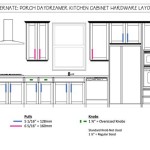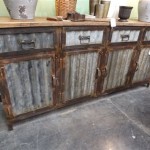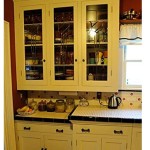Worms In Kitchen Cabinets: Identification, Eradication, and Prevention
The discovery of worms in kitchen cabinets can be a distressing experience for any homeowner. While the term "worms" is often used loosely, the presence of these creatures typically indicates an infestation of insect larvae, posing a potential threat to stored food products and the structural integrity of the cabinets themselves. Accurate identification of the type of worm, understanding the causes of infestation, and implementing effective eradication and prevention strategies are crucial for resolving this issue and maintaining a healthy and sanitary kitchen environment.
It is important to note that what appears to be a worm is most likely the larval stage of a variety of insects. These larvae are often drawn to kitchen cabinets in search of food sources, particularly grains, cereals, flour, and other dry goods. The environment within cabinets, often dark and undisturbed, provides an ideal habitat for these larvae to thrive. Therefore, a detailed examination of the infestation is paramount to determine the appropriate course of action.
Identifying the Culprit: Common Worm Types
The identification of the specific type of larvae present within kitchen cabinets is the first step toward effective treatment. Several types of insect larvae are commonly found in these environments, each requiring a slightly different approach to eradication.
One of the most frequent offenders is the Indian meal moth larva (Plodia interpunctella). These larvae are typically cream-colored with a brown head and can be found crawling on or within infested food products. They often leave behind silken threads and webbing, which can be a telltale sign of their presence. The adult moths are easily recognizable by their distinctive brown and copper-colored wings. Indian meal moths primarily target grains, nuts, dried fruits, and pet food.
Another common culprit is the larva of the flour beetle (Tribolium species). These larvae are small, slender, and worm-like, typically reddish-brown or yellowish-white in color. They are often found within flour, cereals, and other grain products. The adult beetles are small, reddish-brown insects that can also be present in infested areas. Flour beetles are known for their ability to survive in dry conditions and can quickly contaminate large quantities of food.
Less frequently, pantry moths (Ephestia kuehniella) may be the source of the infestation. Their larvae are similar in appearance to Indian meal moth larvae, but they tend to be slightly larger and may have a pinkish hue. Pantry moth larvae also produce silken webbing as they feed and develop. These moths can infest a wider range of food products, including chocolate, spices, and powdered milk.
In rare cases, larvae of wood-boring beetles may be present in kitchen cabinets. These larvae are typically larger and stouter than food-infesting larvae and are characterized by their ability to bore into wood. Their presence indicates a more serious problem and may require professional intervention to prevent structural damage to the cabinets.
Differentiating between these different types of larvae is essential because their respective life cycles and preferred food sources will influence the strategies used for eradication and prevention. Once the larvae are identified, one can proceed to eliminate them.
Eliminating Worms: Eradication Strategies
Once the type of worm or larva has been identified, the next step is to implement a comprehensive eradication strategy. This involves removing infested food products, thoroughly cleaning the cabinets, and employing appropriate control measures to prevent re-infestation.
The first and most crucial step is to identify and discard all infested food products. This includes any items that show signs of larvae, webbing, or adult insects. Even if a food product appears to be unaffected, it is advisable to discard it if it has been stored near infested items, as it may contain eggs or larvae that are not immediately visible. All discarded food products should be placed in sealed bags or containers to prevent the infestation from spreading. Consider freezing suspect food items for several days to kill any potential eggs or larvae before discarding them.
After removing infested food products, the cabinets should be thoroughly cleaned. This involves removing all items from the cabinets and vacuuming all surfaces, including shelves, walls, and corners. Pay particular attention to cracks and crevices, as these areas can harbor eggs and larvae. Use a vacuum cleaner with a hose attachment to reach difficult-to-access areas. After vacuuming, wash the cabinets with hot, soapy water, and then rinse thoroughly with clean water. Ensure that the cabinets are completely dry before replacing any food products.
In some cases, the use of insecticides may be necessary to eliminate persistent infestations. However, it is important to use insecticides carefully and responsibly, following all label instructions. Choose insecticides that are specifically labeled for use in food storage areas and that are safe for use around humans and pets. Avoid spraying insecticides directly onto food preparation surfaces or food products. Boric acid can be used as a natural alternative in cracks and crevices, but it should be kept away from children and pets.
Consider using pheromone traps to monitor for adult moths. These traps attract male moths using synthetic pheromones, preventing them from mating and reproducing. Place traps in areas where moths have been observed, away from direct sunlight and drafts. Regularly check the traps and replace them as needed.
A thorough inspection of surrounding areas is required. Check pantries, drawers, and other storage spaces for signs of infestation. Clean and treat these areas as necessary to prevent the infestation from spreading. It is important to address the problem holistically, rather than just focusing on the kitchen cabinets.
Complete eradication may require patience and persistence. Consistently applying the above strategies and monitoring for signs of re-infestation are key.
Preventing Future Infestations: Long-Term Strategies
Preventing future infestations is essential for maintaining a healthy and pest-free kitchen environment. This involves implementing several long-term strategies, including proper food storage, good hygiene, and regular monitoring.
Proper food storage is the most effective way to prevent infestations. Store all dry goods, such as grains, cereals, flour, and nuts, in airtight containers. This will prevent insects from accessing the food and laying eggs. Glass or plastic containers with tight-fitting lids are ideal for this purpose. Avoid storing food products in their original packaging, as insects can easily chew through cardboard and plastic. Furthermore, purchase food in reasonable quantities that can be consumed within a reasonable timeframe. This minimizes the risk of food products sitting in the pantry for extended periods, becoming susceptible to infestation.
Good hygiene is also crucial for preventing infestations. Regularly clean kitchen cabinets and pantries to remove food debris and spills. Sweep or vacuum floors regularly to remove crumbs and other attractants. Wipe down countertops and other surfaces after preparing food. Empty trash cans frequently and keep them tightly covered. Pay attention to potential entry points for insects, such as cracks and crevices in walls and floors. Seal these entry points with caulk or other appropriate materials.
Regular monitoring can help detect infestations early, before they become widespread. Inspect food products regularly for signs of insects, webbing, or damage. Check pheromone traps for trapped moths. If any signs of infestation are detected, take immediate action to eliminate the problem. Early detection and intervention can prevent the infestation from spreading and minimize the damage.
Maintain a cool and dry environment in kitchen cabinets. Insects thrive in warm, humid conditions. Use a dehumidifier to reduce humidity levels in the kitchen, especially during the summer months. Ensure that cabinets are well-ventilated to prevent moisture buildup. Regularly inspect cabinets for signs of moisture damage, such as mold or mildew, as these conditions can attract insects.
Consider using natural repellents to deter insects from entering kitchen cabinets. Place bay leaves in cabinets and drawers, as their scent is known to repel many insects. Wipe down surfaces with vinegar or tea tree oil, which have natural insecticidal properties. Use diatomaceous earth, a natural powder made from fossilized algae, as a barrier around cabinets and other potential entry points. Diatomaceous earth is harmless to humans and pets but is deadly to insects.
By implementing these preventive measures, homeowners can significantly reduce the risk of worm infestations in their kitchen cabinets and maintain a healthy and sanitary environment.

How To Get Rid Of Pantry Flies And Worms

Moth Larvae On Your Kitchen Ceiling Here S What To Do

Ask The Expert Link Between Dermestids And Rodents Pest Management Professional

How To Eradicate Meal Worms Switzerland Forums General Glocals Com

Moth Larvae On Your Kitchen Ceiling Here S What To Do

Worms In Kitchen Drawer Are Carpet Beetle Larvae All About

How To Get Rid Of Pantry Moths The Old Farmer S Almanac

Kitchen Pests Fact Sheet Extension

Kitchen Pests Fact Sheet Extension

Small Worm Like Bugs In The Kitchen Ehow
Related Posts








